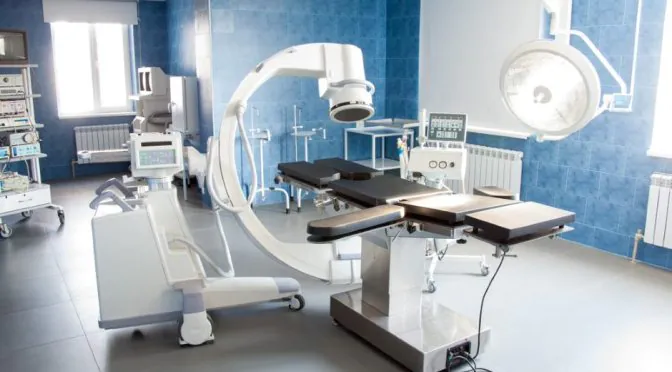Global Medical Device Market Research Overview
The medical device market has long been considered as one of the most vital parts in the global healthcare and wellbeing industry. Today, numerous advanced medical devices still play an essential role in the processes of diagnosing, monitoring and treating health and physical disorders, which has helped the market maintain steady growth over the last few decades. Within this substantial growth, several market segments are expected to stand out and witness some of the highest growth rate in the year 2019.
According to Technavio’s latest Global Medical Device Market Research 2018-2022, the global medical device market size will achieve an incremental growth of nearly $120 billion from 2018 to 2022, registering a CAGR of more than 5% during the forecast period. One of the major driving factors is the increasing prevalence of diseases, coupled with the growing aging population in the worldwide.
The prevalence of acute and chronic diseases is increasing significantly. Diseases such as cardiovascular, neurological, orthopedic, and respiratory disorders all require designated medical equipment or device to diagnose and provide treatment. The prevalence of these chronic diseases also increases significantly with age. In 2017, approximately 650 million people around the world were aged 65 and above, and this figure is expected to increase to around 810 million by 2025. Thus, the increasing prevalence of diseases and aging population around the world are expected to pose a higher demand for medical devices in the foreseeable future.
Meanwhile, several medical device market trends are projected to have a positive impact on the industry growth over the next few years. These trends include the emergence of innovative technologies, strategic mergers and acquisitions among major medical device manufacturers, as well as the increasing market penetration in emerging countries such as China, India and Saudi Arabia.
Technavio’s global medical device market research also offers a complete analysis of the competitive landscape and the key market players within it. Technavio has identified several world’s leading medical device manufacturers by market share. These leading medical device companies include Fresenius, GE Healthcare, Johnson & Johnson, Medtronic, Siemens Healthiness, and Stryker etc. Purchase Technavio’s full report for a deep dive into the market landscape.
View Technavio’s medical device market research library: Download a free sample report now
Three Fast Growing Segments in the Global Medical Device Market for 2019
Brain monitoring devices
The global brain monitoring device market is expected to be one of the fastest growing segments in the global medical device market in 2019. This market posted a strong 8.42% year-over-year growth in 2018 and will continue to grow through 2022, accelerating at a CAGR of 9%. This market growth is expected to be mainly driven by the rising population with brain and neurological diseases, such as epilepsy, Alzheimer, and brain tumours. It is estimated that the number of people suffering from Alzheimer’s disease in the US will reach almost 14 million by 2050. To tackle this issue, there has been an increasing support from governments for research and developmental activities. Many of the world’s leading medical device manufacturers are also increasingly focusing on the development of innovative and technologically advanced brain monitoring devices by increasing the funding for R&D projects.
Cardiac monitoring and therapy devices
The cardiac monitoring and therapy device market is projected to be another segment of the global medical devices industry to witness a strong growth rate in 2019. Our latest medical device market research identifies this segment will register a CAGR of more than 8% by between 2017-2021. This growth in market size during the forecast period will be attributed to the huge demand driven by the large number of individuals across the globe who are increasingly suffering from cardiovascular diseases (CVDs) such as angina, MI, stroke, heart failure, venous thromboembolism (VTE), and heart arrhythmia. Cardiac monitoring devices offer improved mobility, ease of use, streamlined workflow, and interoperability due to various technological advances. Today, many of these devices have improved programming and expanded storage capabilities, and they can be integrated with smartphones. Several vendors are also focusing on designing small and compact cardiac monitoring technologies. Technological advances in the cardiac monitoring and therapy devices have made them smaller, easier to insert percutaneously, and capable of insertion at the bedside.
Orthopedic medical imaging devices
The market for orthopedic medical imaging has maintained a strong growth momentum in recent years, and will continue to accelerate through 2019. The advent of 3D imaging has enhanced orthopedic care by allowing better bone and implant position examination compared with other imaging modalities such as conventional fluoroscopy or X-ray. The emergence of 3D holographic imaging has revolutionized medical imaging by providing more flexible and accurate images in orthopedic and sports medicine at a faster rate by converting the two-dimensional (2D) CT and MRI data into interactive virtual reality images. Due to these factors, our medical device market research analysis indicates that the global orthopedic medical imaging market is projected to grow at a CAGR of more than 5% by 2021. Increasing medical technology advancements will be the primary driver for the global orthopedic medical imaging market growth over the next few years.



